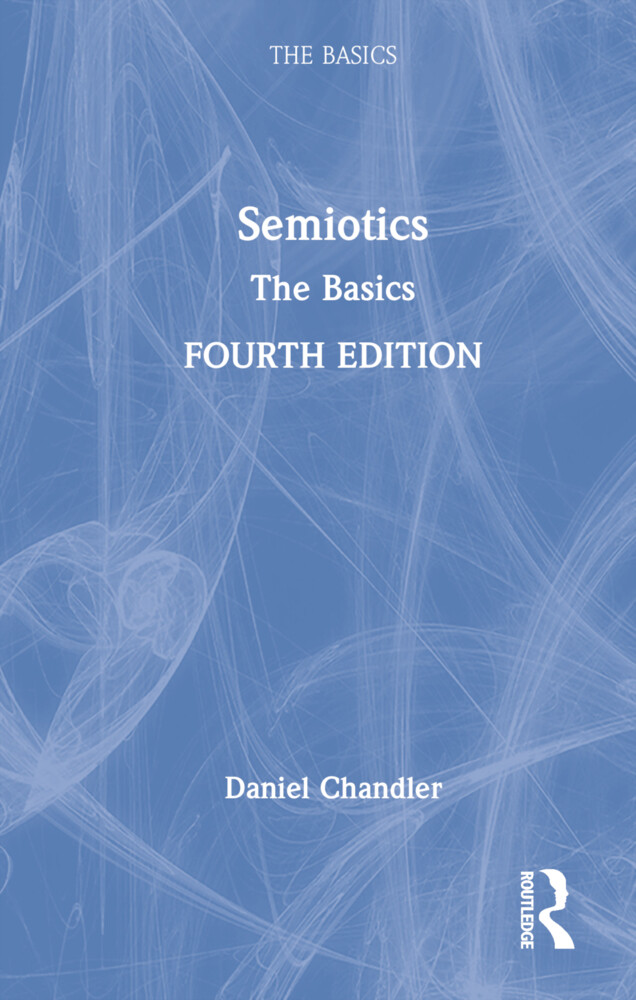
Zustellung: Mi, 19.02. - Sa, 22.02.
Versand in 1-2 Wochen
VersandkostenfreiBestellen & in Filiale abholen:
This fourth edition of the bestselling textbook has been fully updated, continuing to provide a concise introduction to the key concepts of semiotics in accessible and jargon-free language. It is an essential reference guide for students at all levels of language and communication, media and cultural studies.
This fourth edition of the bestselling textbook, now available in print, eBook, and audiobook, has been fully updated, continuing to provide a concise introduction to the key concepts of semiotics in accessible and jargon-free language.
Demystifying what is a complex, highly interdisciplinary field, key questions covered include: what are signs and codes? What can semiotics teach us about representation and reality? What tools does it offer for analysing texts and cultural practices? The fourth edition of Semiotics: The Basics focuses in particular on its application to communication and cultural studies. It has been extensively revised and extended, with an entirely new section on cognitive semiotics, many more illustrations, and a new glossary.
With updates to theory, further examples, and suggestions for review and further reading, this must-have resource is both the ideal introductory text and an essential reference guide for students at all levels of language and communication, media, and cultural studies.
Inhaltsverzeichnis
List of illustrations
Preface
Acknowledgements
Introduction
Definitions
Relation to philosophy and linguistics
Structuralism
Why study semiotics?
1 Models
The Saussurean model
Arbitrariness
The relational system
The Peircean model
Jakobson's model
Sign relations
Symbolic relations
Iconic relations
Indexical relations
The case of photography
Mixed modes
Types and tokens
Rematerializing the sign
Hjelmslev's model
Reflections
Further reading
2 Realities
Categorization
Language, thought, and reality
Referentiality
Referentiality
Modality
The word is not the thing
Empty signifiers
Reflections
Further reading
3 Structures
Horizontal and vertical axes
The paradigmatic dimension
The commutation test
Oppositions
Markedness
Deconstruction
Conceptual alignment
The semiotic square
The syntagmatic dimension
Spatial relations
Sequential relations
Structural reduction
Langue and parole
Reflections
Further reading
4 Codes
The language model
Digital and analogue codes
Typologies
Social codes
Textual codes
Genre
Aesthetic realisms
Invisible editing
Interpretive codes
Ways of reading
Codification
Limitations
Reflections
Further reading
5 Ways of meaning
Rhetorical tropes
Metaphor
Metonymy
Synecdoche
Irony
Master tropes
Denotation and connotation
Myth
Reflections
Further reading
6 Interactions
Models of communication
Context and relevance
Communicative functions
The positioning of the subject
Modes of address
Intertextuality
Problematizing authorship
No text is an island
Intratextuality
Textual framing
Reflections
Further reading
7 Perspectives
Structuralist semiotics
Poststructuralist semiotics
The return of Saussure
Social semiotics
Cognitive semiotics
Cartesian dualism
Semiotic stances
Mental representation
Embodiment
Methodologies
An ecological and multimodal approach
Reflections
Further reading
Going further
Glossary
References
Index
Mehr aus dieser Reihe
Produktdetails
Erscheinungsdatum
27. Mai 2022
Sprache
englisch
Seitenanzahl
384
Reihe
The Basics
Autor/Autorin
Daniel Chandler
Verlag/Hersteller
Produktart
gebunden
Abbildungen
50 SW-Abb., 50 SW-Zeichn., 10 Tabellen
Gewicht
453 g
Größe (L/B/H)
24/129/198 mm
ISBN
9780367726546
Entdecken Sie mehr
Pressestimmen
Praise for Semiotics: The Basics:
'A very useful book, not only for those who wish to find out about semiotics, but also for those interested in finding out how language or any other sign system is far from being a neutral medium of communication.' - Juan A. Prieto-Pablos, University of Seville, Spain
'The book is well written and up-to-date, without unnecessary verbosity or jargon, and yet reflects the complexity of the field and its problems.' - Journal of Pragmatics
'It is no small task to present semiotics in a manner that makes it accessible to the beginning student, and Chandler achieves this, describing difficult concepts clearly and thoroughly.' - Donald J. Cunningham, Indiana University, USA
'This book is, at once, highly accessible, extremely interesting, encyclopedic in scope, and authoritative. Highly recommended for all courses involving semiotics and its applications to media, culture and society.' - Arthur Asa Berger, San Francisco State University, USA
Praise for the fourth edition:
'Daniel Chandler's Semiotics is thorough, well organized, and well written. Provocative and informative, its range, depth, and erudition should make it of interest, not only to philosophers and theorists of art, language, and culture, but to anyone interested in the relation of signs to mind and reality and the relation of reality and mind to signs.' - Jeffrey Strayer, Purdue University Fort Wayne, USA
Bewertungen
0 Bewertungen
Es wurden noch keine Bewertungen abgegeben. Schreiben Sie die erste Bewertung zu "Semiotics: The Basics" und helfen Sie damit anderen bei der Kaufentscheidung.
































